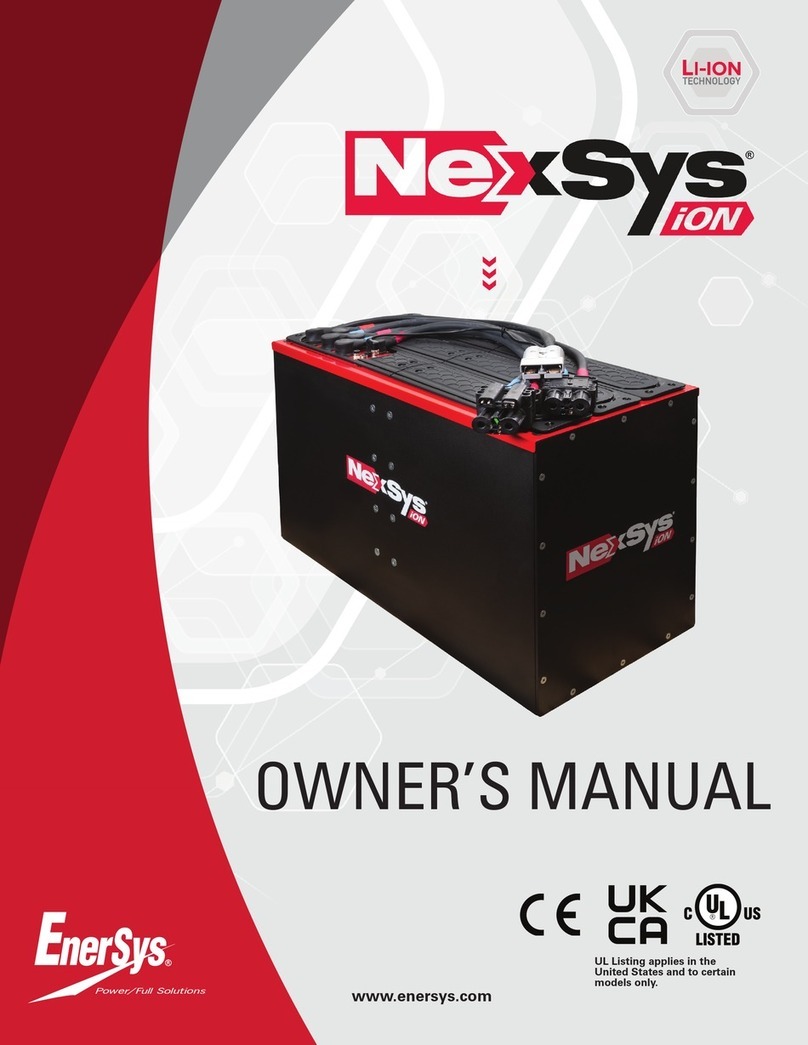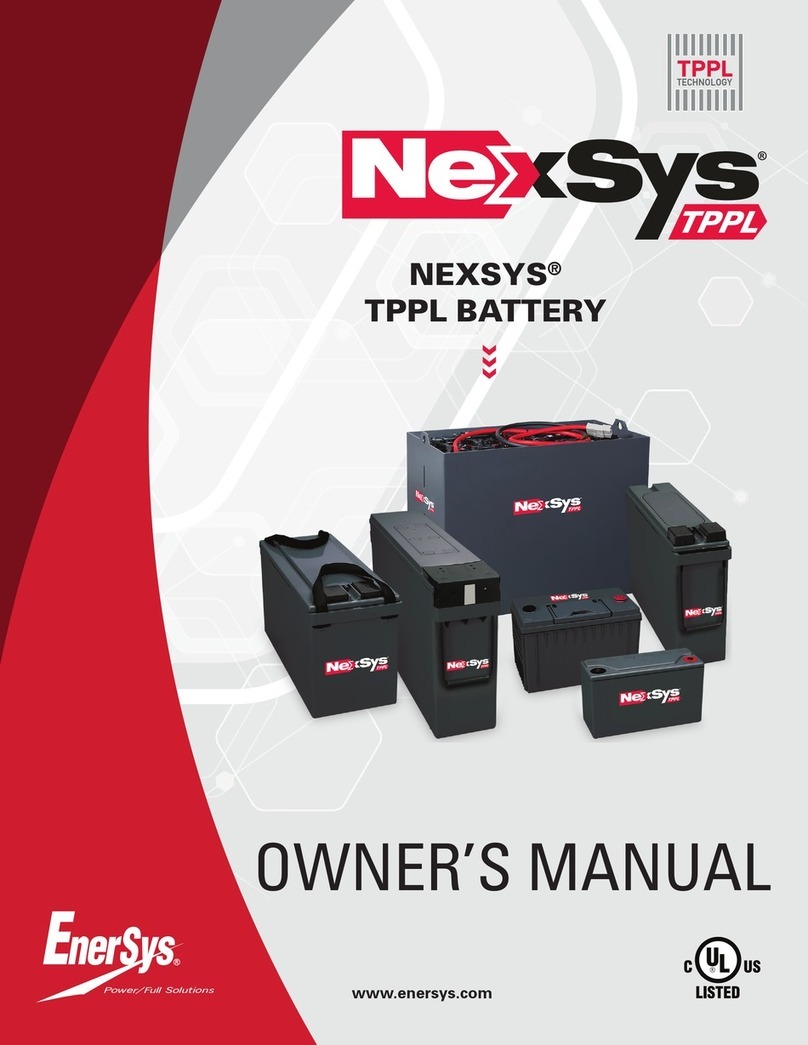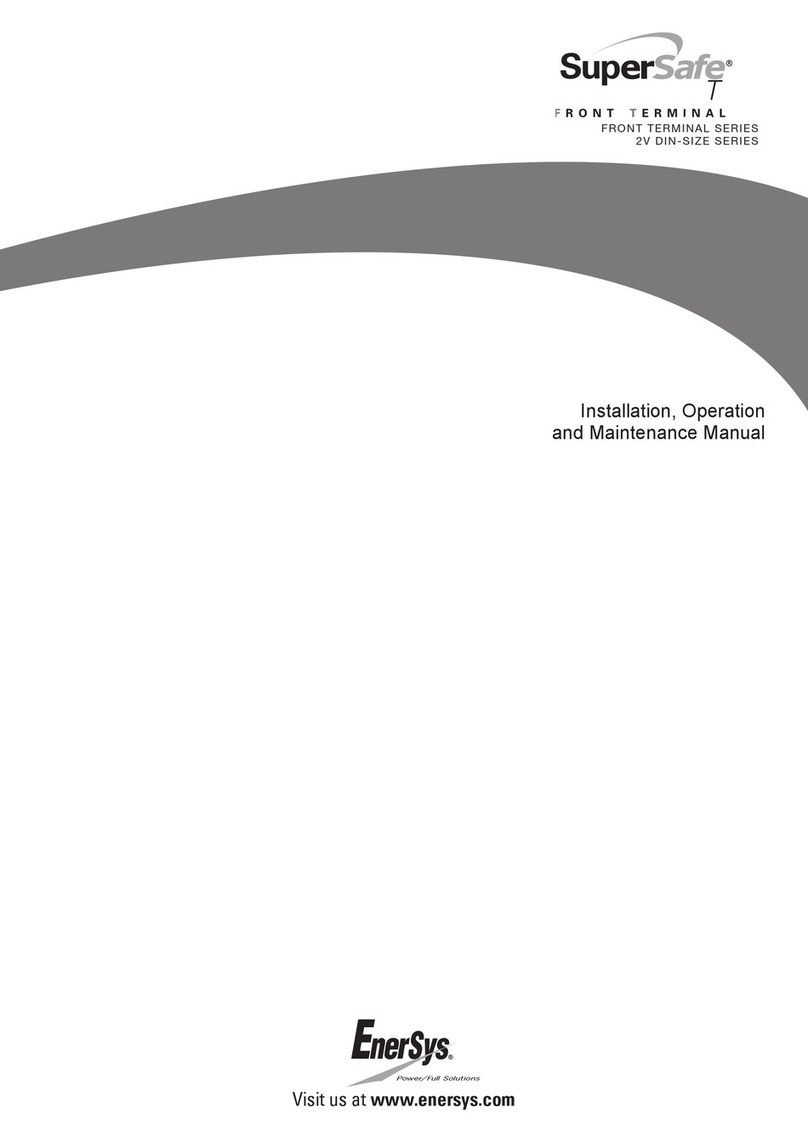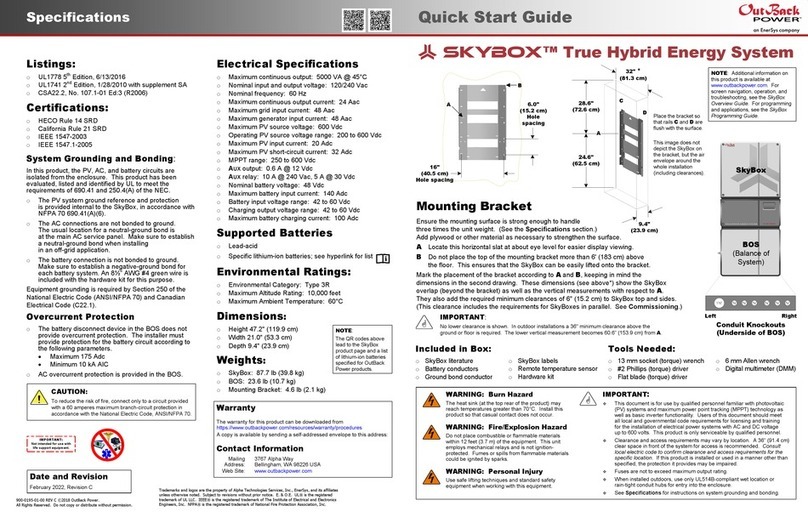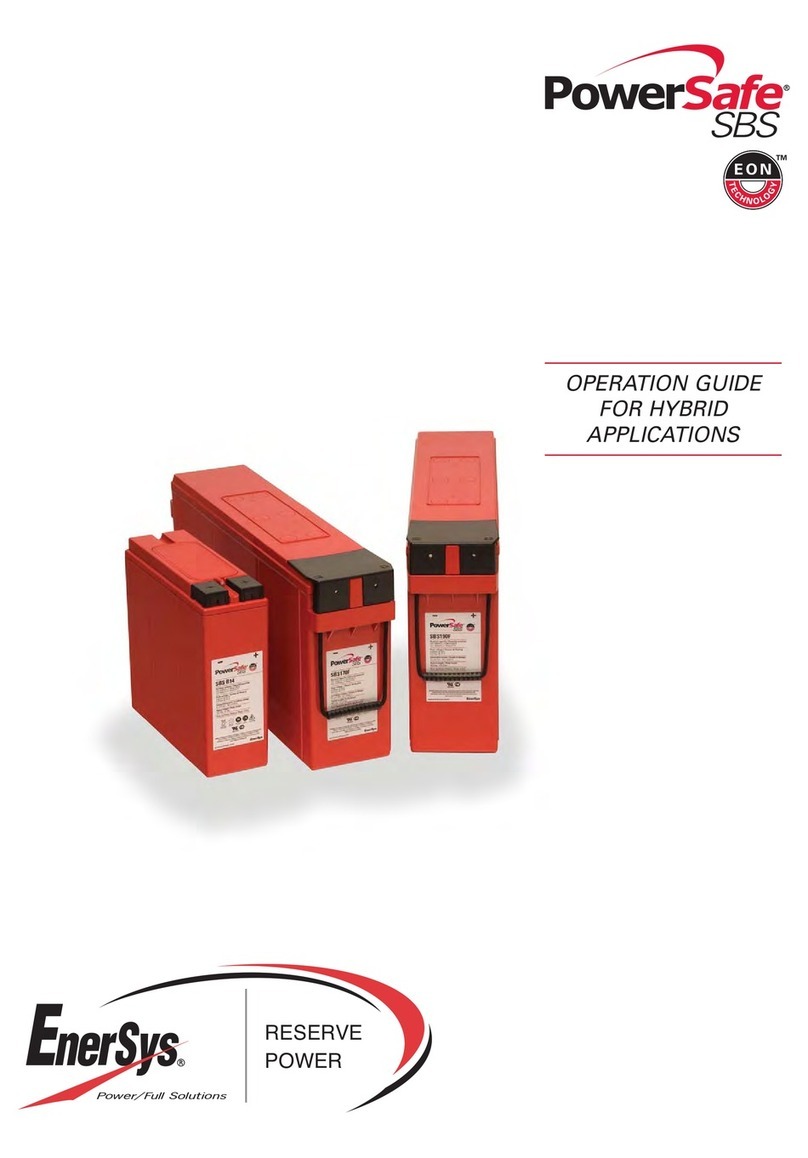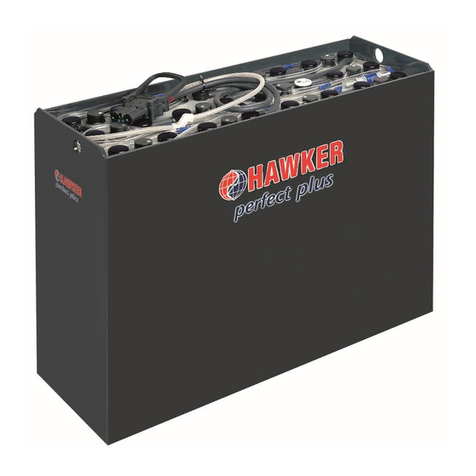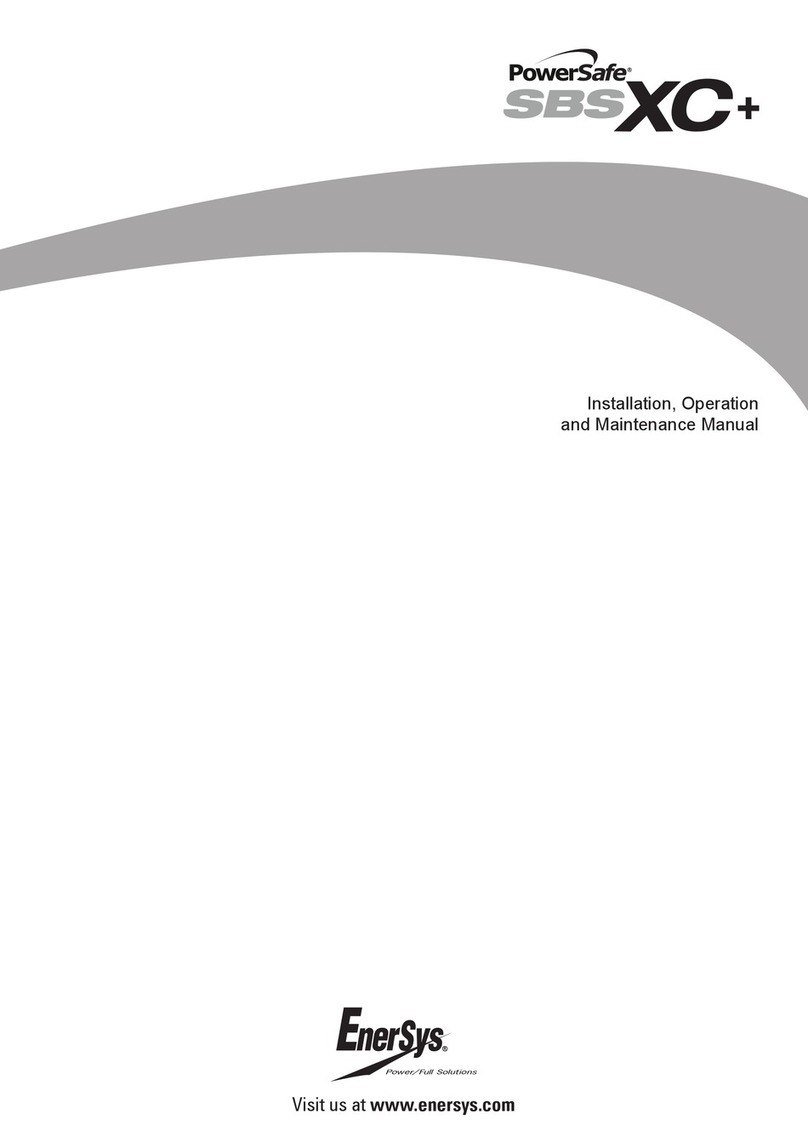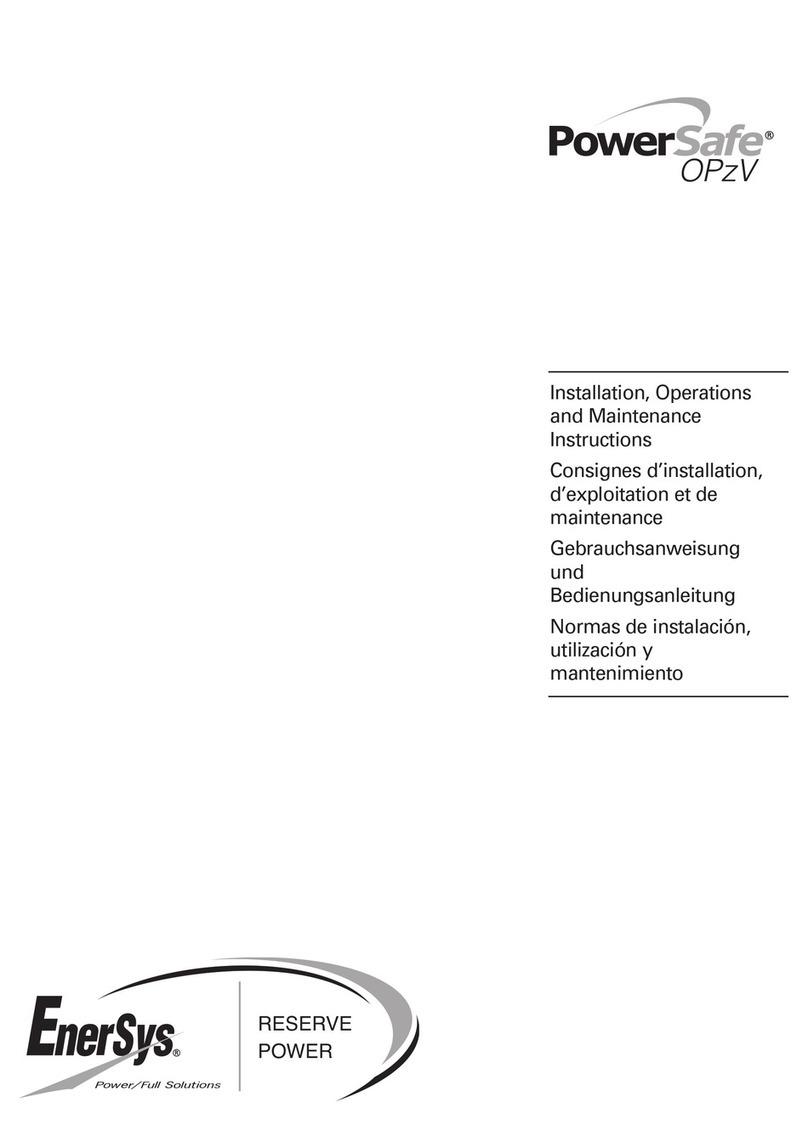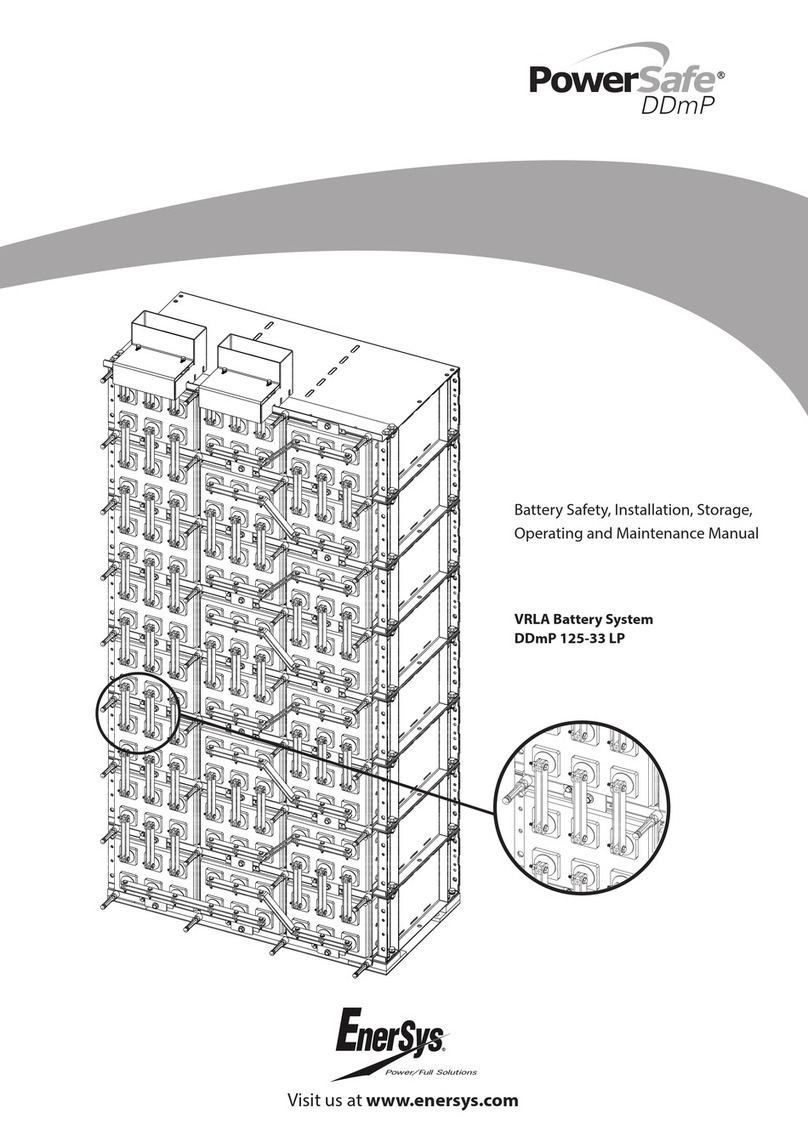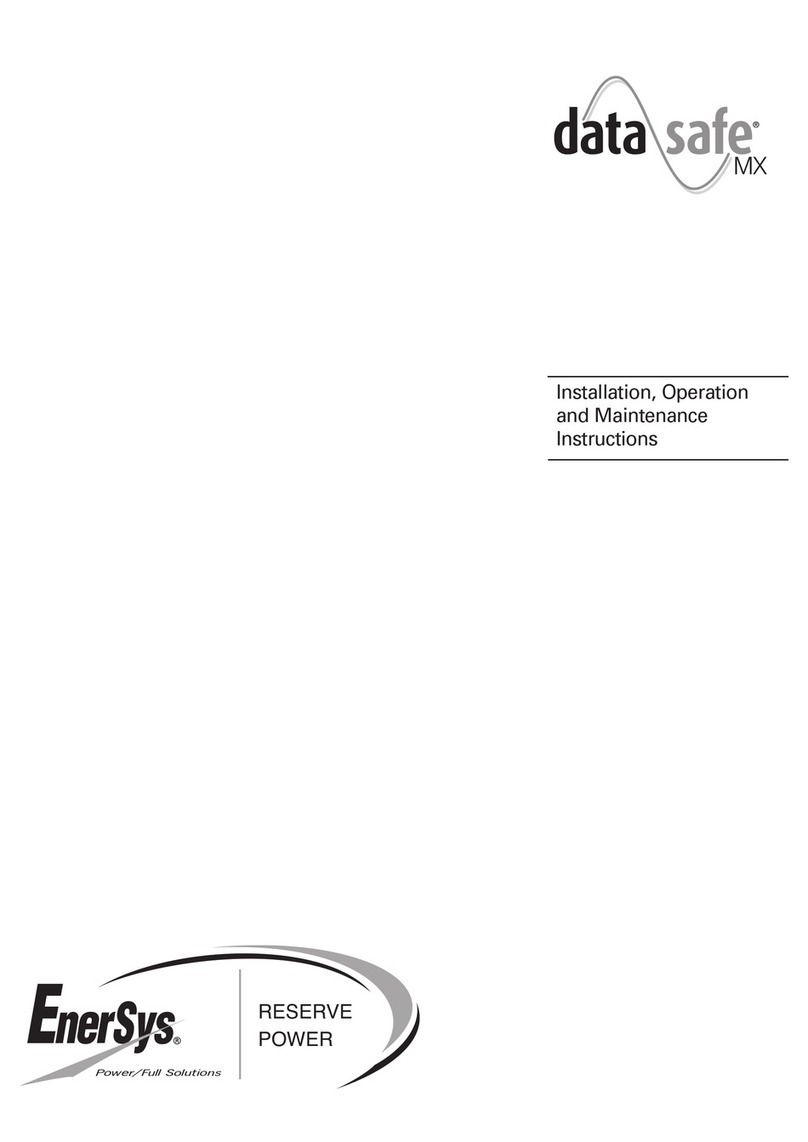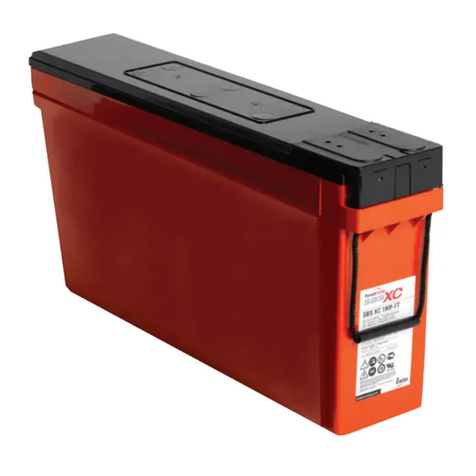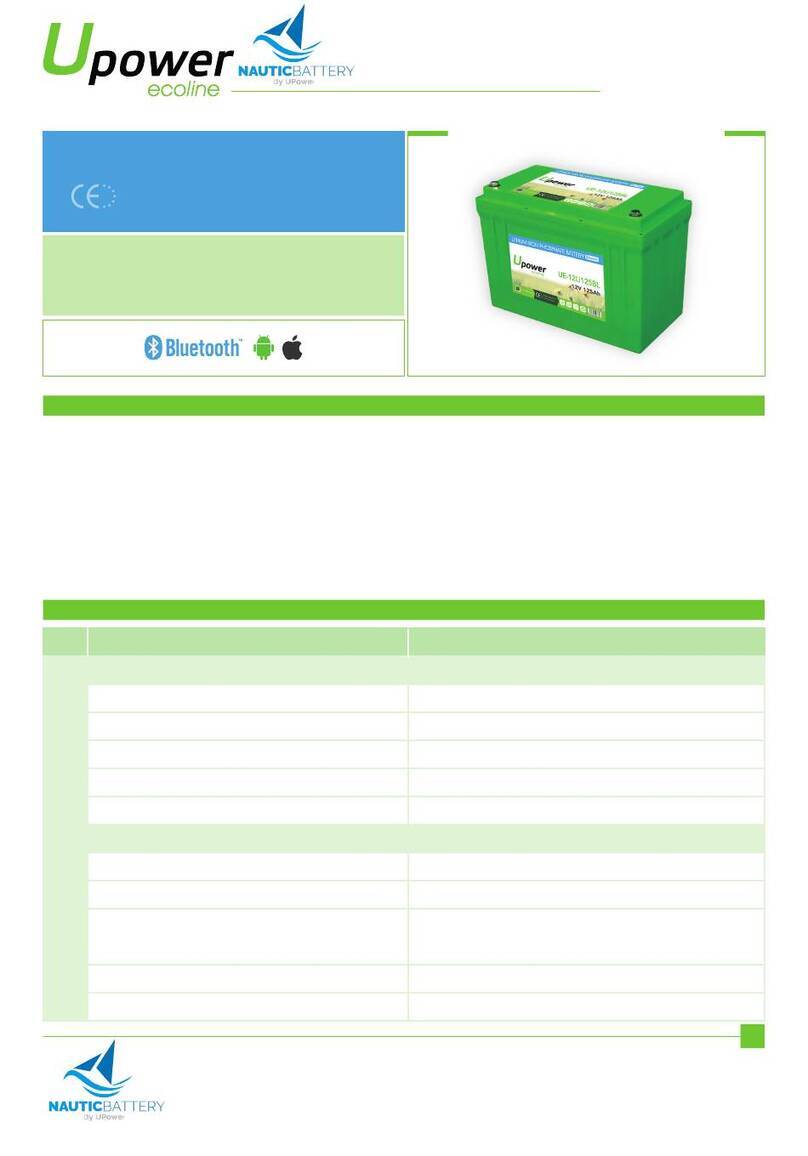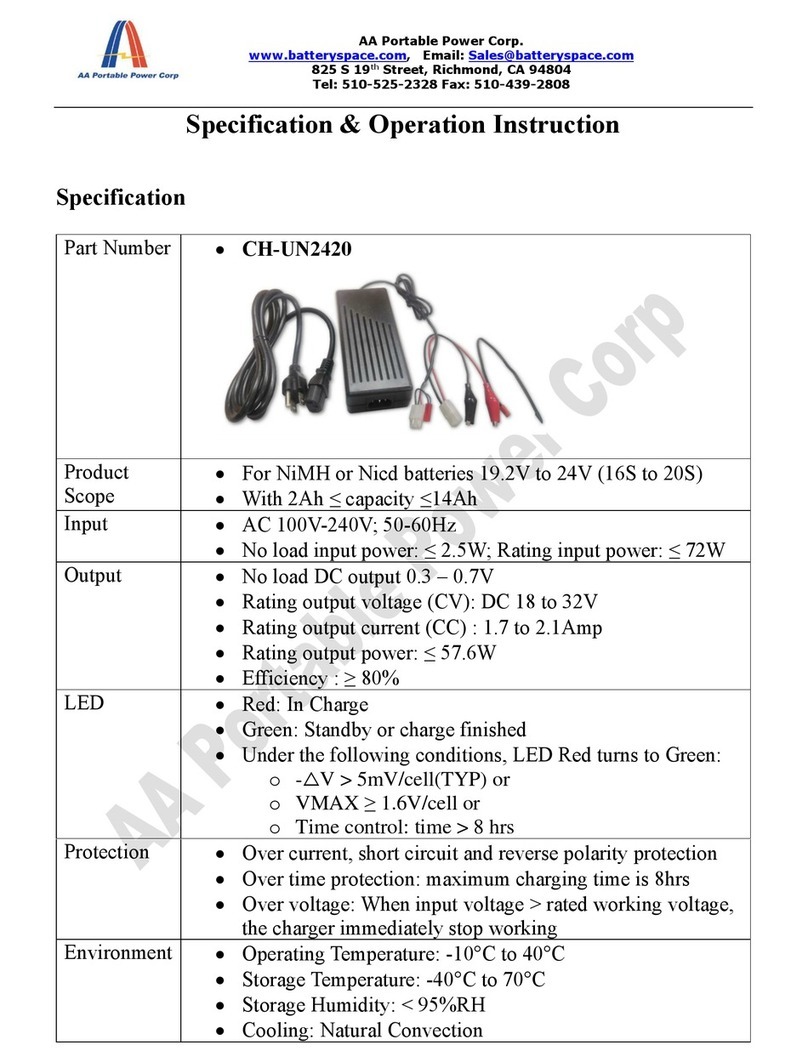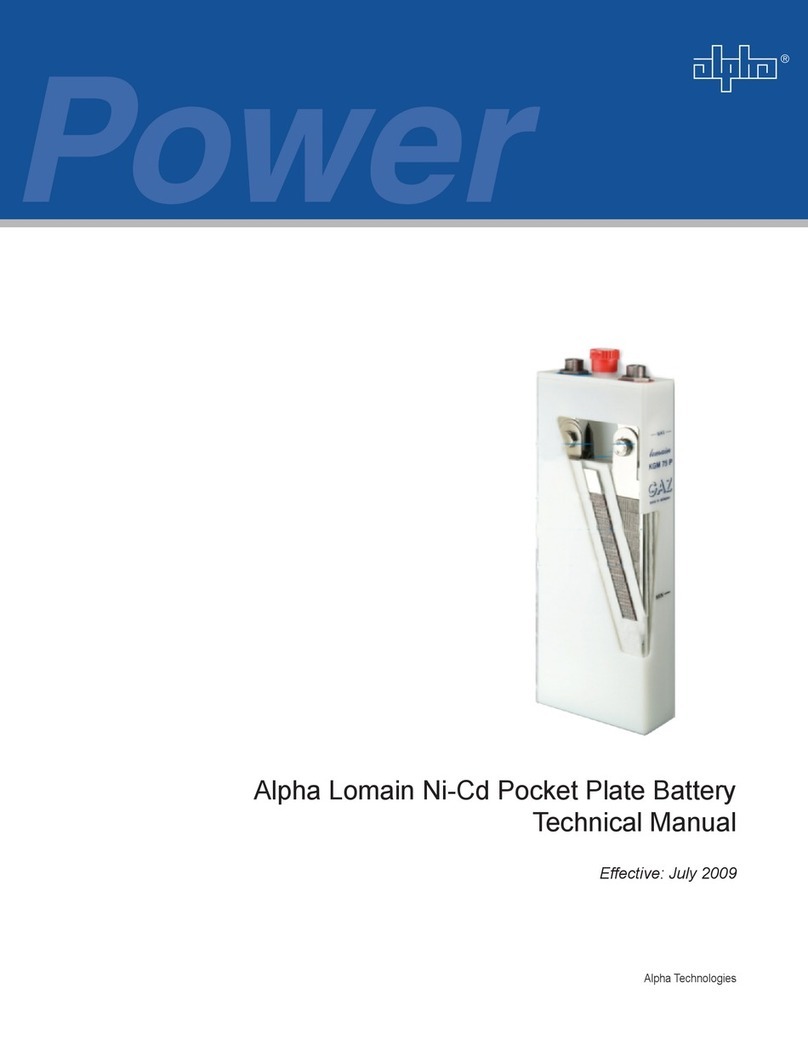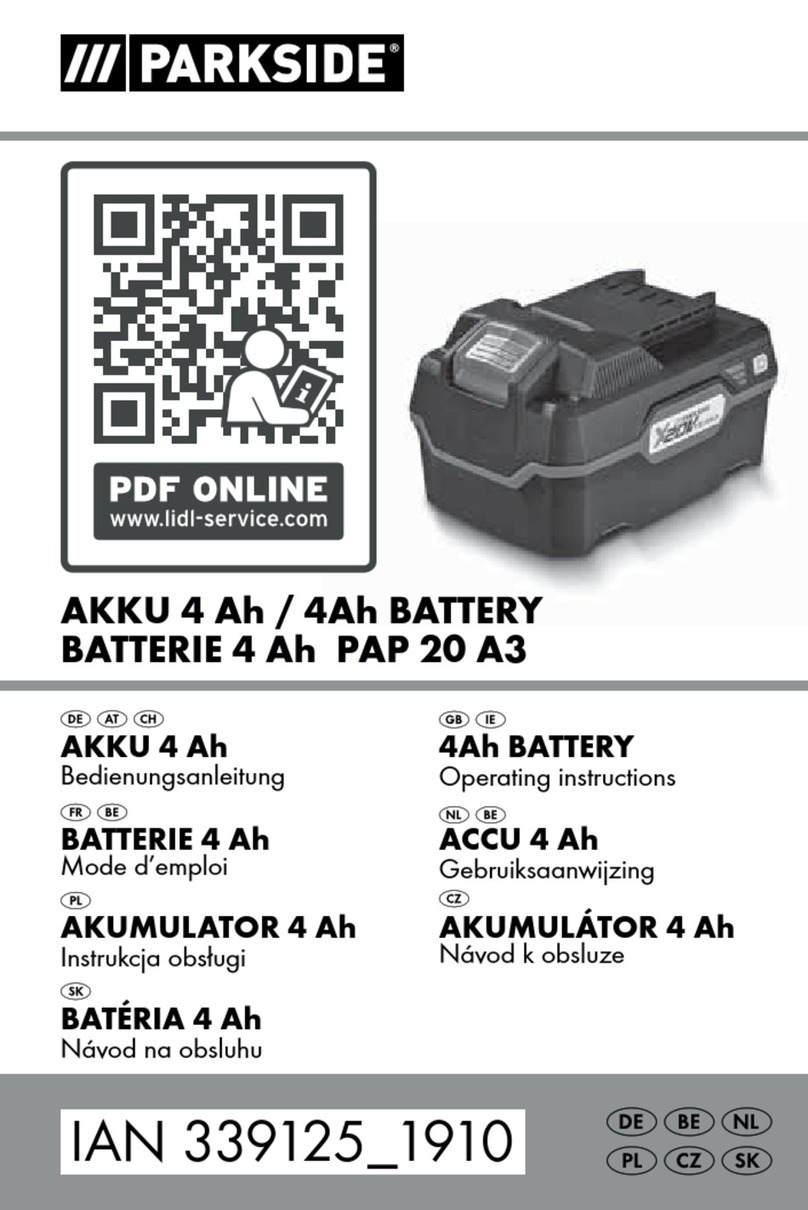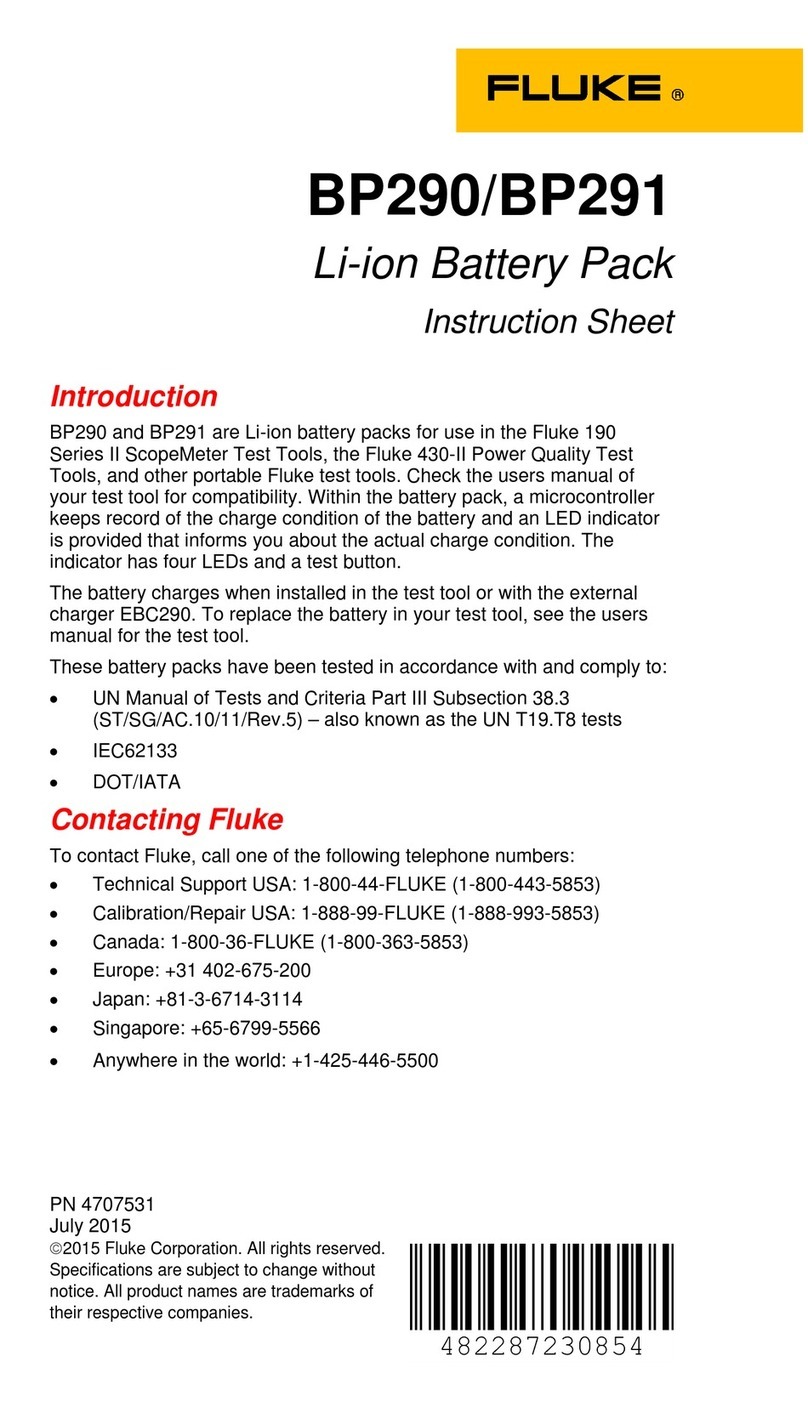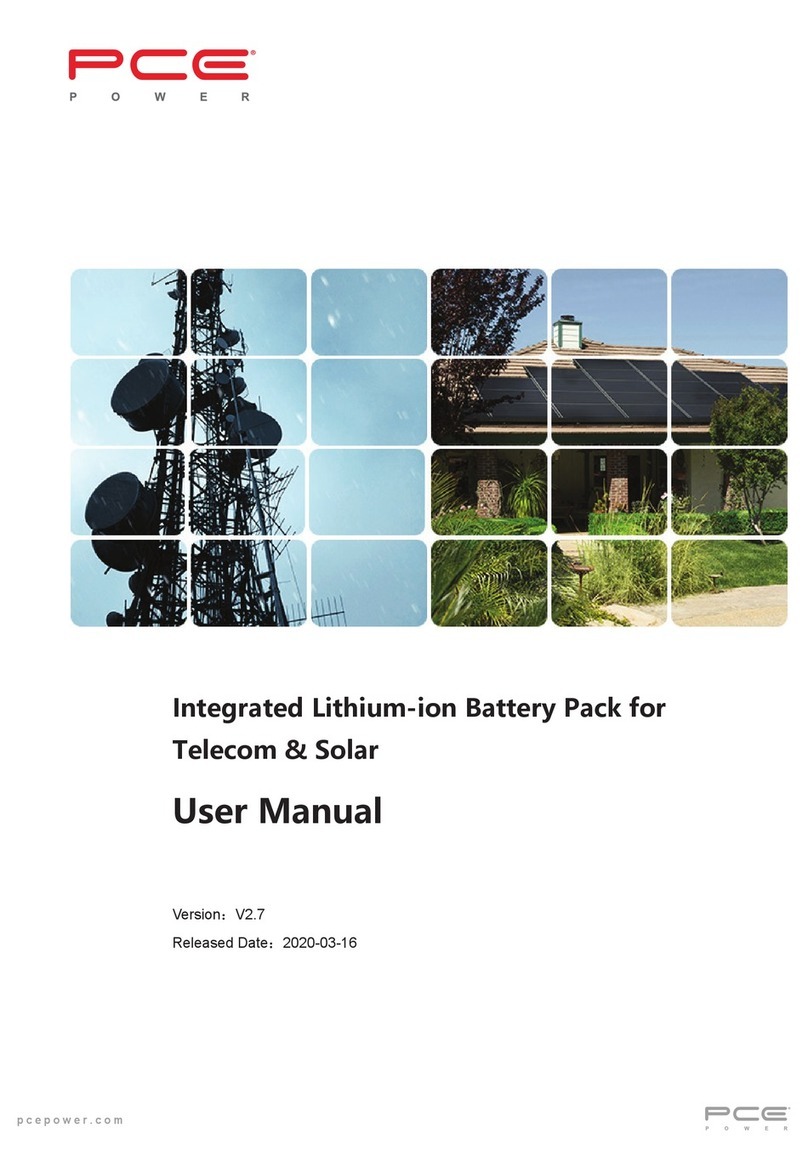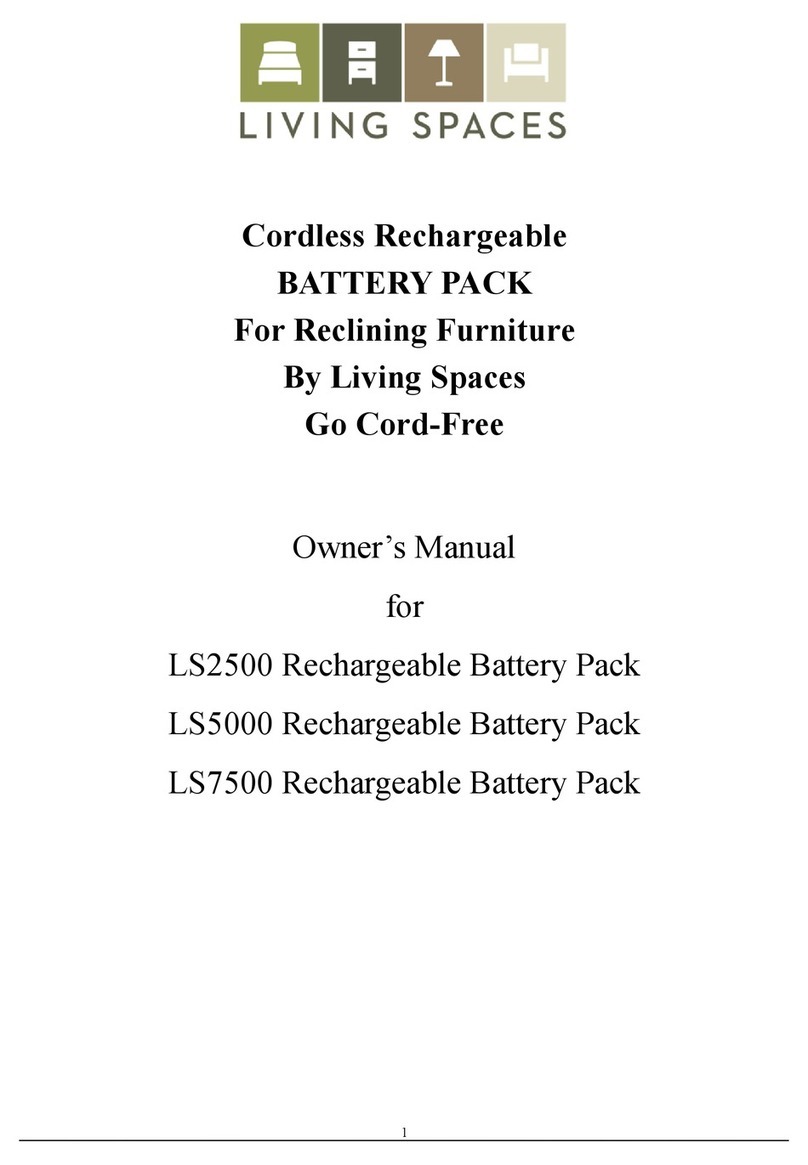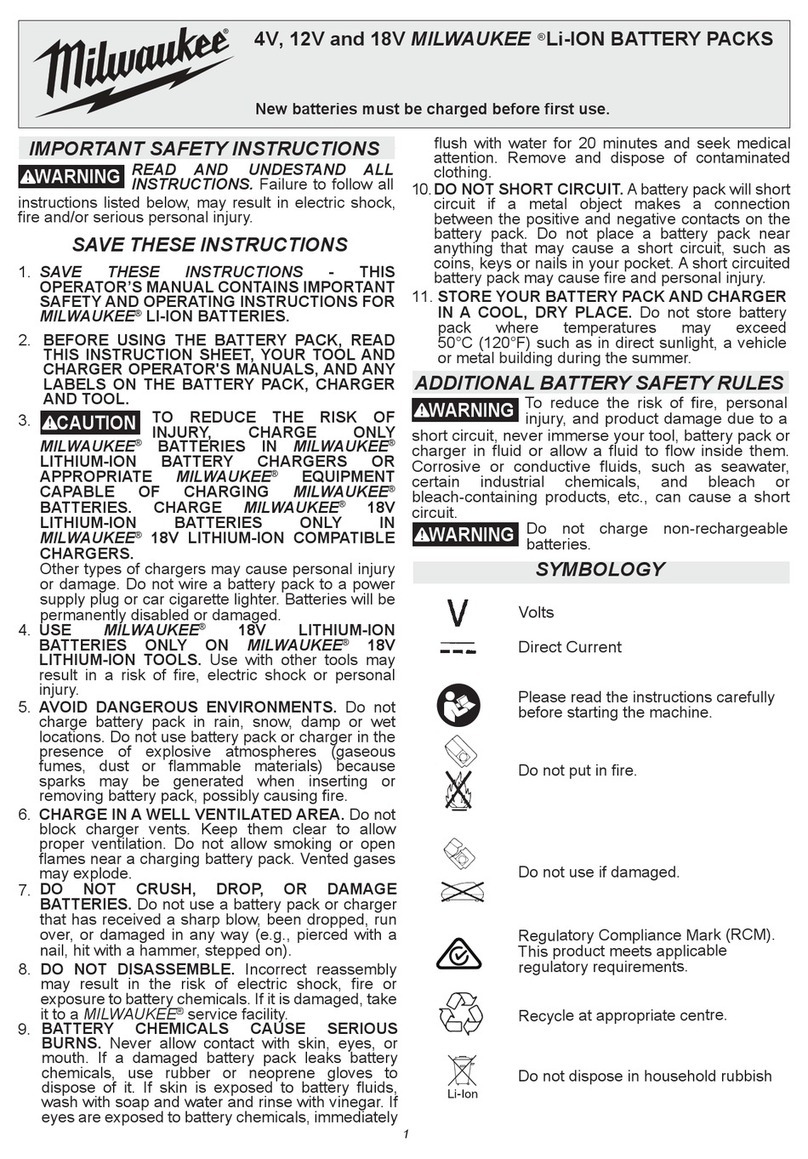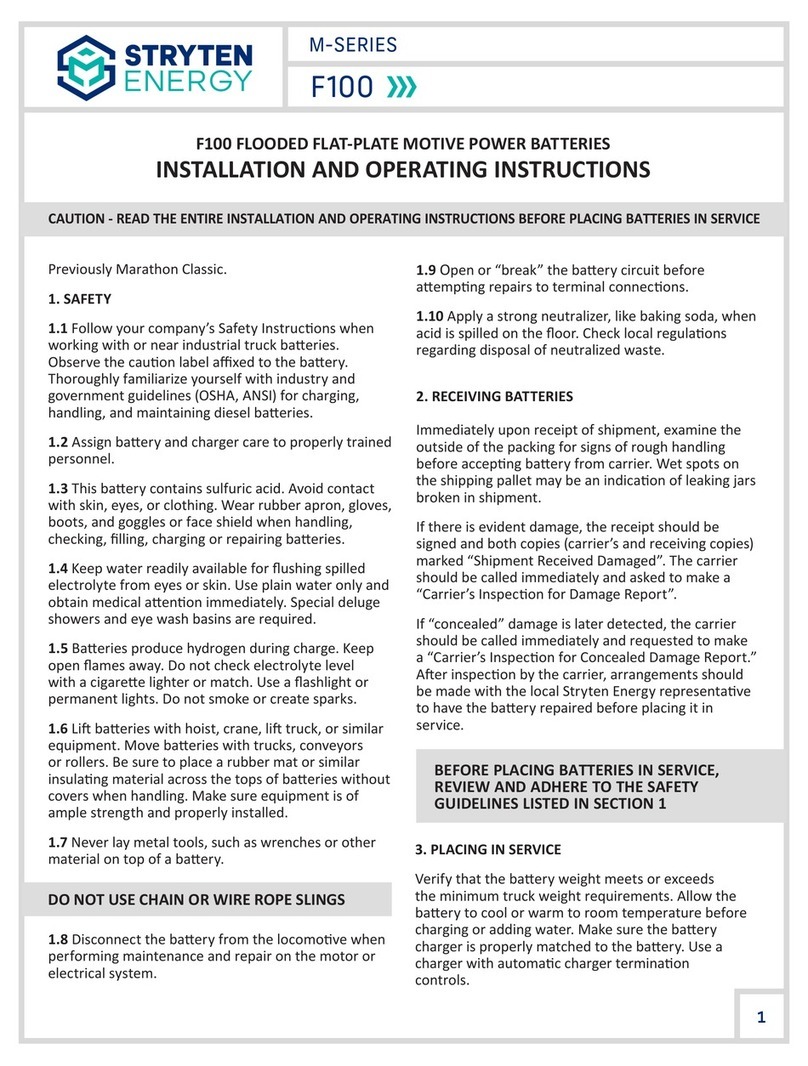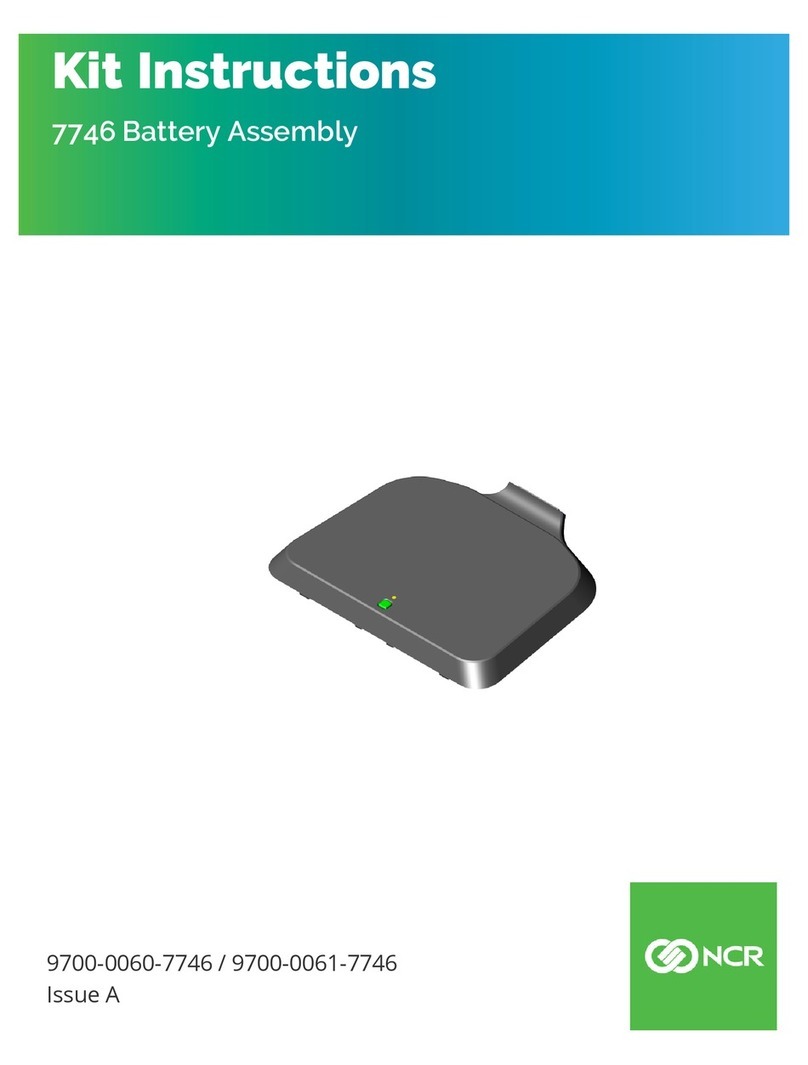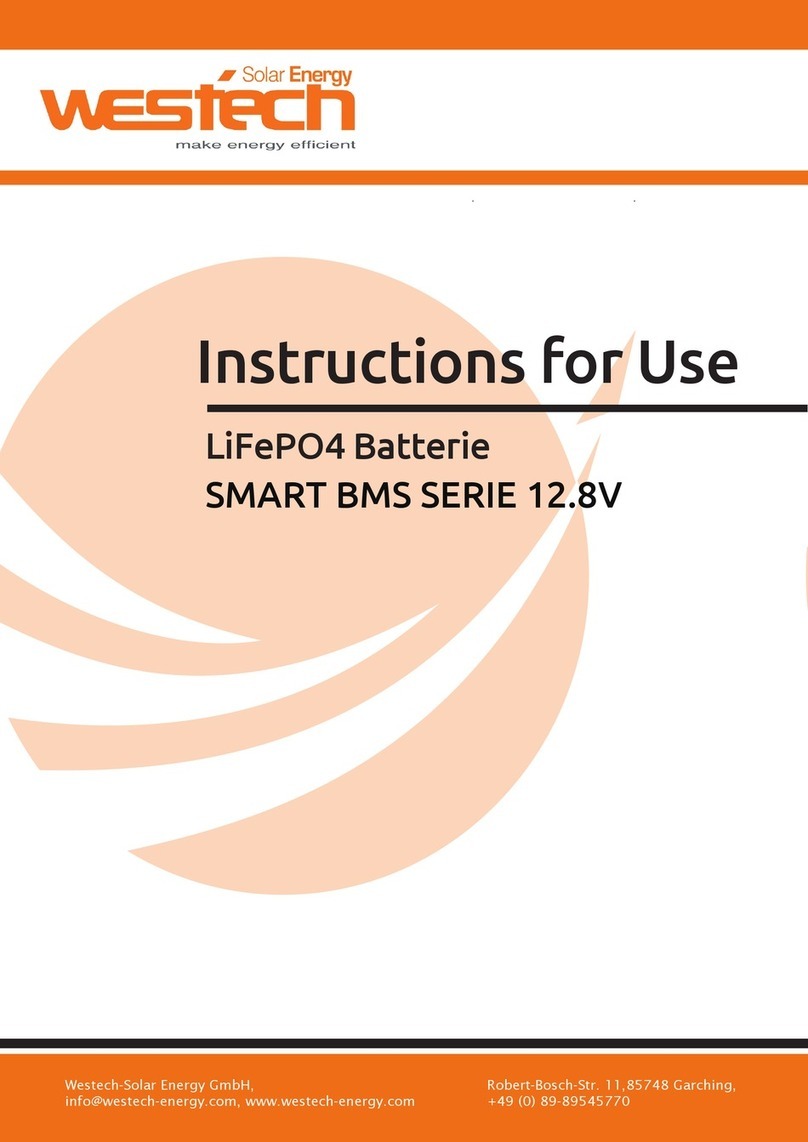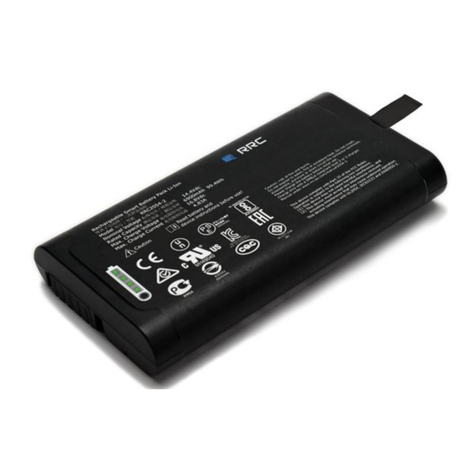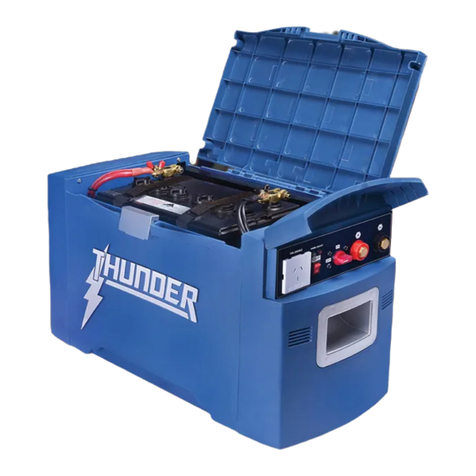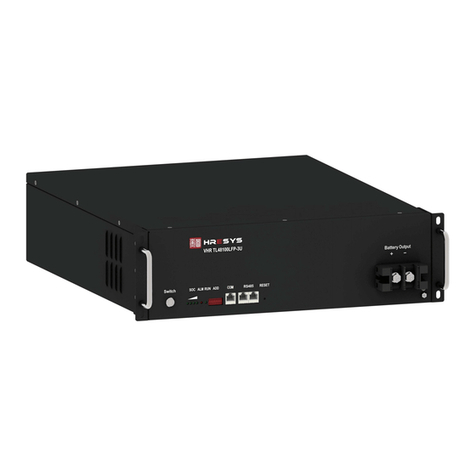www.enersys-emea.com
04.2008 - Subject to revisions without prior notice.
2. Operation
EN 50272-3 “Traction batteries for industrial trucks” is the standard
which applies.
The nominal operating temperature is 30°C. The optimum lifetime of the
battery depends on the operating conditions (temperature and depth of
discharge). The temperature range of use for the battery is between
+15°C and +35 °C, any use outside of this range must be approved by the
EnerSys Technical department. Optimal battery life is obtained with the
battery at a temperature of 25-30°C. Higher temperatures shorten the life
of the battery (according to IEC1431 technical report), lower temperatu-
res reduce the available capacity. The upper temperature limit is 45°C
and batteries should not be operated above this temperature.
The capacity of the battery changes with temperature and falls consider-
ably under 0 °C. The optimum lifetime of the battery depends on the
operating conditions (moderate temperature and discharges equal to or
lower than 80% of the nominal capacity C5). The battery obtains its full
capacity after about 3 charging and discharging cycles.
2.1. Discharging
The valves on the top of the battery must not be sealed or covered.
Electrical connections (e.g. plugs) must only be made or broken in the
open circuit condition. Discharges over 80% of the rated capacity are
categorised as deep discharges and are not acceptable as they reduce
considerably the life expectancy of the battery. Discharged batteries
MUST be recharged immediately and MUST not be left in a discharged
condition.
Note: The following statement only applies to partially discharged
batteries.
Discharged batteries can freeze.
Limit the discharge to a maximum of 80% DOD.
The cycle life of the battery will depend on the DOD,
the higher the DOD, the shorter the cycle life.
The presence of a discharge limiter on the vehicle is imperative,
The following energy cut-off settings must be used :
• 60% DOD set at 1.93 Volts per cell.
• 80% DOD set at 1.88 Volts per cell.
when discharged with I5(or higher currents).
2.2. Charging
Powerbloc dry XFC batteries must be charged using an approved speci-
fied EnerSys XFC charger. An approved charger MUST be used on these
batteries; failure to do so will affect the performance and life of the bat-
tery and invalidate any warranty.
The specific charging profile developed for recharging the powerbloc dry
XFC blocs allows a rapid recharge in 3 hours from 60% DOD and oppor-
tunity charging as often as needed without damaging the blocs.
The powerbloc dry XFC batteries have an extremely low gas emission.
Nevertheless, provision must be made for venting of the charging gases.
Battery container lids and the covers must be opened or removed.
With the charger switched off, connect the battery to the charger, ensu-
ring that the polarity is correct. (Positive to positive, negative to negati-
ve). Now switch the charger ON.
2.3. Equalising Charge
Equalising charge is not necessary for this technology of battery.
3. Maintenance
The electrolyte is immobilised. The density of the electrolyte can not be
measured.
Never remove the safety valves from the monobloc.
In case of accidental damage to the valve, contact our After Sales
Service for replacement.
3.1. Daily
• Recharge the battery after every discharge.
• Check the condition of the plugs, cables and that all insulation covers
are in place and in good condition.
3.2. Weekly
• Visual inspection for signs of dirt and mechanical damage.
3.3. Quarterly
At the end of the charge, carry out end of charge voltage readings,
measure and record:
• The voltage of the complete battery
• The voltages of each monobloc
If significant changes from earlier measurements or differences between
the monoblocs are found, please contact our Service Department.
If the discharge time of the battery is not sufficient, check:
• That the required work is compatible with the battery capacity
• The settings of the charger
• The settings of the discharge limiter on the vehicle.
3.4. Annually
Internal dust removal from the charger.
Electrical connections: test all connections (sockets, cables, and contacts).
Monoblocs having terminals with insert: Check the torque loading of the
bolts/screws.
According to EN 1175-1 when necessary, but at least once a year, the
insulation resistance of the vehicle and of the battery must be checked
by an electrical specialist.
4. Storage
Batteries are despatched from the manufacturer in a fully charged
condition. The state of charge will decrease with storage.
All batteries lose their stored energy when allowed to stand open-circuit,
due to parasitic chemical reactions.
The rate of self-discharge is non-linear and decreases with decreasing
state of charge. It is also strongly influenced by temperature.
High temperatures greatly reduce storage life.
It is recommended that the fully charged battery should be stored in a
cool dry place, ideally below 20°C.
The battery has a maximum inspection-free storage life of 2 years, if sto-
red at or below 20°C, after which a refresh charge should be administe-
red. However, it is advisable to conduct an inspection and open circuit
voltage check after 12 months and recharge if the OCV is less than 2.10
Volts per cell.
The battery may be stored for up to 5 years without degradation of per-
formance provided that an open circuit voltage (OCV) check is conducted
every 12 months. When stored in temperatures in excess of 30°C (86°F),
the battery should be OCV checked every 6 months.
The graph below shows the relationship between temperature, storage
time and OCV.
5. Disposal
Powerbloc dry XFC batteries are recyclable. Scrap batteries must be
packaged and transported in accordance with prevailing transportation
rules and regulations. Scrap batteries must be disposed of in compliance
with local and national laws by a licensed or certified lead acid battery
recycler.
Back to the manufacturer!
Batteries with this sign must be recycled.
Batteries wich are not returned for the recycling process must be disposed of as hazardous waste!

